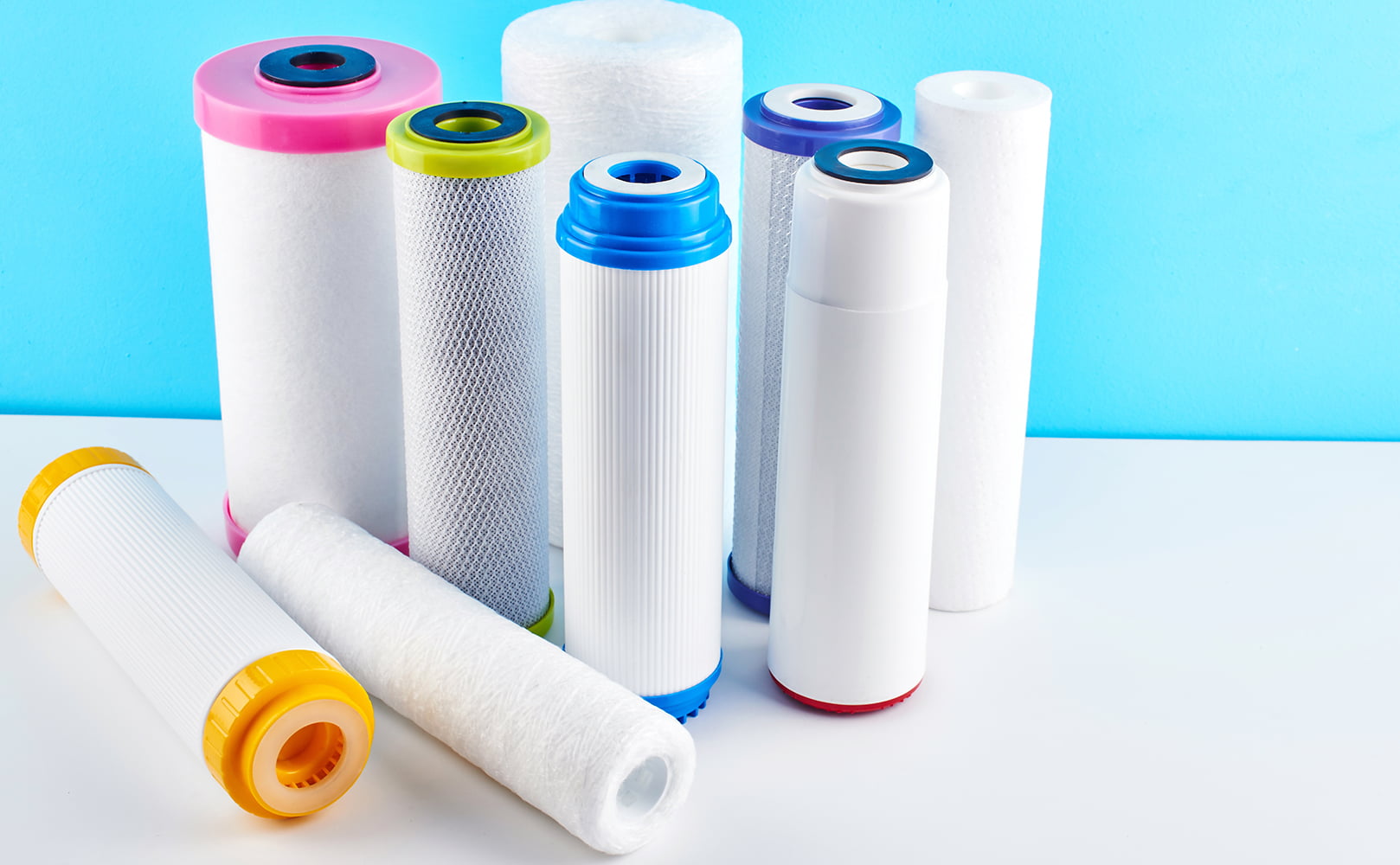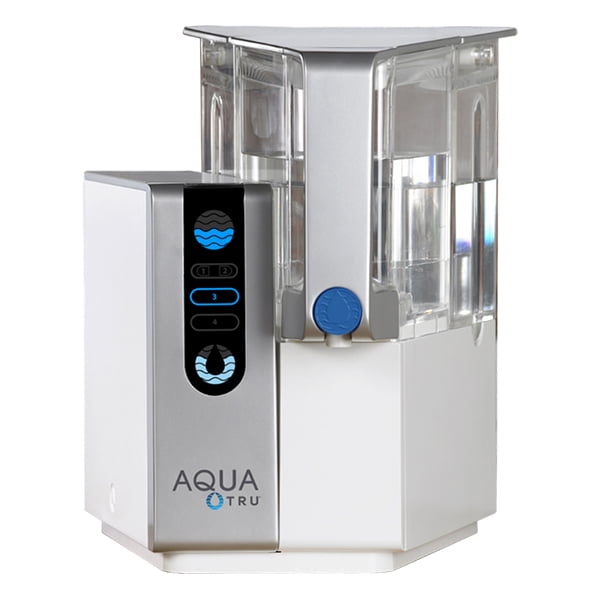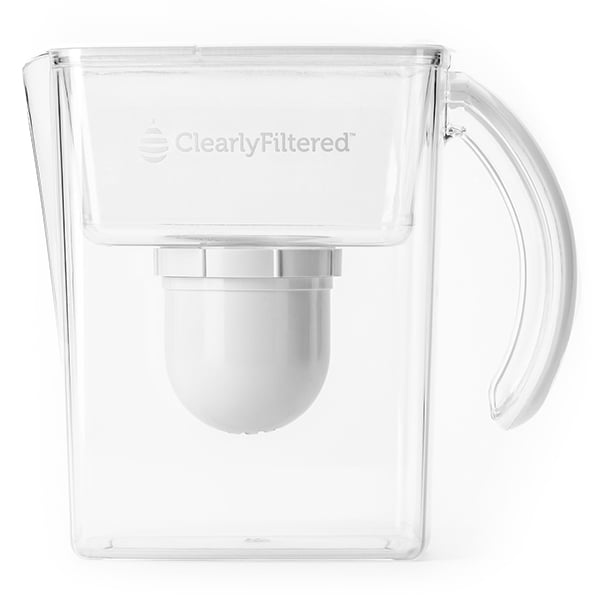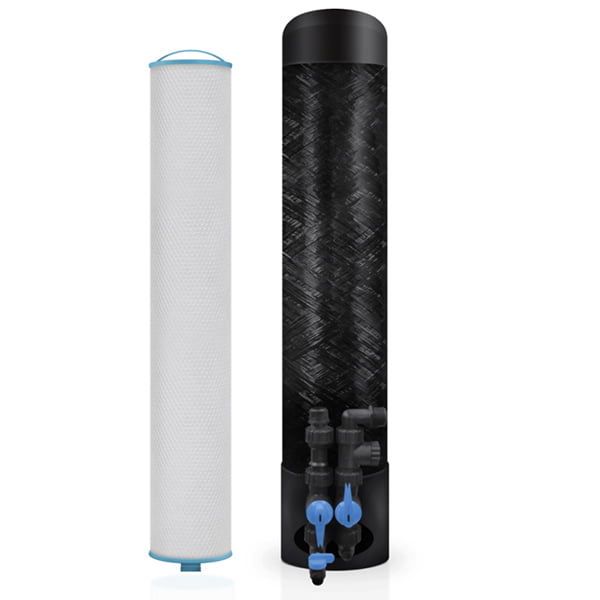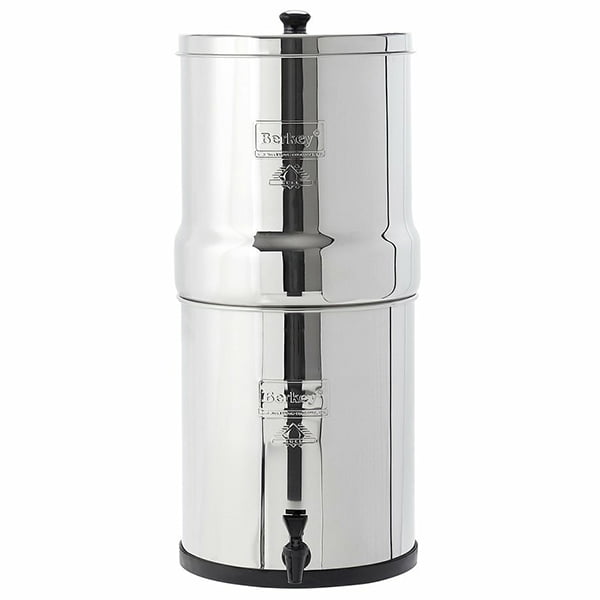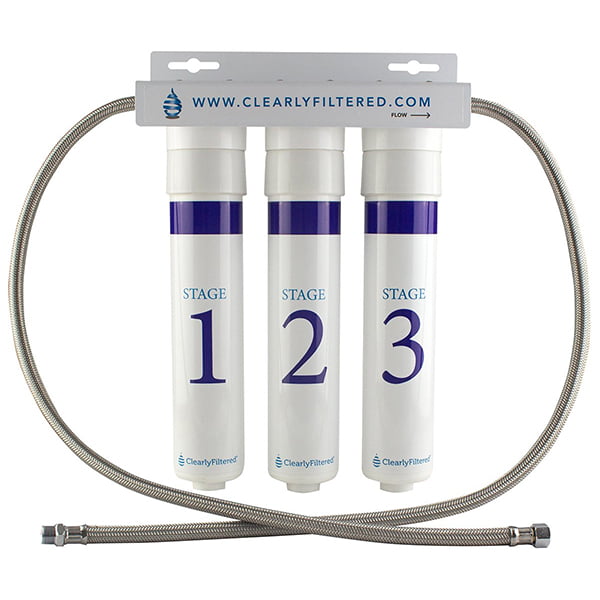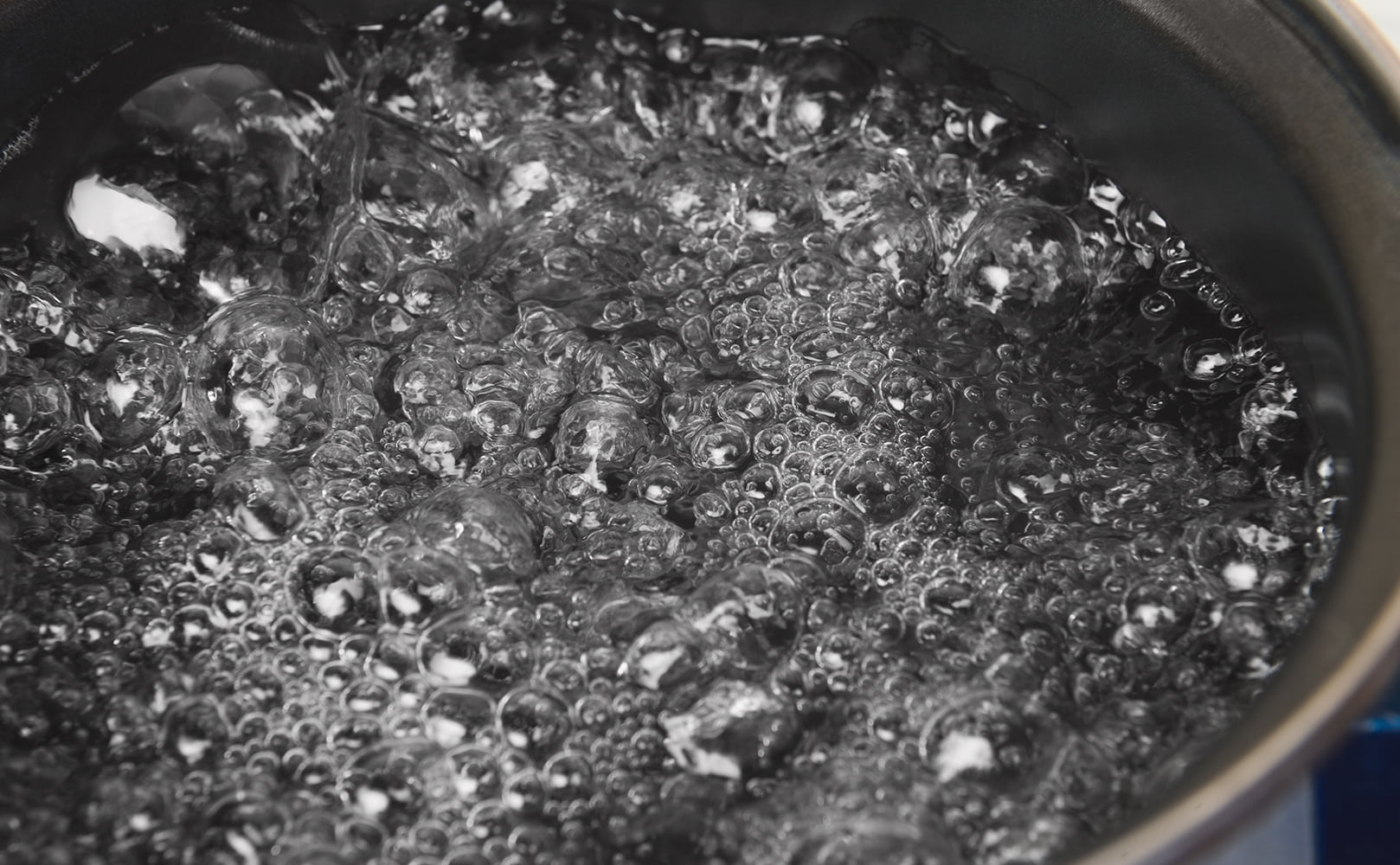How to Filter Lead Out of Water | All Methods Explained
Written by: Gene Fitzgerald // Last Updated: Sep 15, 2023
This page may contain affiliate links. If you buy a product or service through such a link we earn a commission at no extra cost to you. Learn more.
Lead is a toxic metal that can unfortunately be found in our water supply.
Because lead poisoning can result in serious health problems, it is crucial to filter lead from water. There are several ways for doing so. And there are various lead water filters out on the market.
This post will cover everything you need to know about how to filter lead from water + which filter system to use.
Key Takeaways
Here is how to filter lead out of water:
- Reverse osmosis – This is a popular method for filtering lead which involves forcing water through a semi-permeable membrane rejecting lead.
- Distillation heats water until it turns into vapor, which is then condensed back into water. All impurities are left behind.
- Carbon filtration – The carbon media will adsorb lead and other contaminants as the water passes through it.
- KDF filters use chemical reactions to remove soluble lead from water.
How to Filter Lead from Water
Several filtration processes have been proven to remove lead from water effectively. We’ll detail each method below.
1. Reverse Osmosis
Reverse osmosis is a popular method for filtering lead and other contaminants from water. This process involves forcing water molecules through a semi-permeable membrane. The membrane’s pores are small enough to block lead particles while allowing water molecules to pass through.
2. Distillation
Distillation is another common method for filtering lead from water. This process starts by heating water until it turns into vapor. The vapor is then condensed back into water, leaving contaminants behind. Because lead has a higher boiling point than water, it will not be vaporized and will remain in the boiling chamber.
3. Carbon Filtration
With carbon filtration, water is passed through a bed of activated carbon. This type of carbon has been treated to be extremely porous. As a result, it can adsorb lead and other contaminants as the water passes through it.
4. KDF
KDF, or Kinetic Degradation Fluxion, is a type of water filter medium that uses a chemical reaction to remove lead and other soluble contaminants from water.
When water passes through, the lead particles are attracted to the surface of the medium where they get stuck.
Types of Lead Water Filtration Systems
Now that you know the different processes available that will help you filter lead from your water supply, it’s time to enumerate the actual filtration systems you can consider for your home. We’ll also include our top picks for each category. Let’s dive in!
NSF Testing/Certification
Before shopping for a lead water filter, it’s important to check whether it has undergone NSF testing and certification. NSF is a global leader in developing public health standards, and their water filtration certifications are recognized worldwide.
An NSF-certified lead water filter means that the product has been tested by an accredited third-party laboratory and proven to remove a specific percentage of lead from water. The percentage removal is typically between 95% and 99%.
For lead filtration, you want to specifically look for NSF/ANSI Standard 53. This standard applies to point-of-use (POU) and point-of-entry (POE) systems designed to reduce specific health-related contaminants, including lead, in drinking water.
If you’re shopping for a reverse osmosis system, make sure the brand has gone through NSF/ANSI Standard 58 for reverse osmosis systems.
Reverse Osmosis Systems
Reverse osmosis systems typically have a five-stage filtration process. A sediment filter removes large particles like dirt and rust in the first stage. The second stage uses a carbon filter to remove chlorine and other chemicals.
Third comes the reverse osmosis membrane, which filters out most of the lead and other contaminants. The fourth is another carbon filter, and the fifth is a storage tank.
AquaTru Reverse Osmosis Water Filtration System
Water Filter Pitchers
One of the most popular methods for filtering lead from water is using a water filter pitcher. These devices are designed to hold a specific amount of water, usually around 8 to 12 cups. The water is then filtered as it moves through the device and into the pitcher’s reservoir.
Most water filter pitchers use carbon filters to remove impurities.
Clearly Filtered Water Pitcher
- Lead Reduction Rate: 99.3%
- Also Removes More Than 360 Other Contaminants
- NSF Testing: 42, 53, 401 & 473
- Made in the US
- 1-Month Return Window + Limited Lifetime Product Warranty
- → See the Full Review
Whole House Water Filters
As its name suggests, a whole house water filter system filters all the water in your home. This is because it is typically installed at the point of entry before water reaches any faucets or appliances.
One advantage of a whole house water filter is that it can save you time and hassle. Instead of installing a filtration system for each faucet, you only need to do it once for your entire home.
One disadvantage of a whole house filter is that it can be costly to install. Additionally, because it filters all the water coming into your home, it will need to be regularly maintained – which can also add to the cost.
PIONEER Whole House Lead Water Filter
- Lead Reduction Rate: 99.62%
- Also Removes Cysts, PFOA/PFOS, Some Chlorine and Chloramine, Bad Taste & Odor
- NSF Certifications: 53
- For Up to 3 Bathrooms (Use 2 Units in Parallel for More Water)
- 100,000 Gallons Filter Life
- 6-Month Money-Back Guarantee + Limited Lifetime Product Warranty
- → See the Detailed PIONEER Review
Countertop and Under-the-Sink Water Filters
Countertop water filters typically come in pitcher or dispenser form. These filters are easy to set up and usually don’t require any tools.
Under the sink water filters are installed under your kitchen or bathroom sink, typically requiring some minor plumbing skills. These filters are more permanent than countertop filters and usually filter water at a higher flow rate.
Big Berkey Gravity Water Filter
- Lead Reduction Rate: 99.9%
- Also Removes Most Other Contaminants
- NSF Certifications: 42, 53
- No Installation Needed
- 2 Years to Lifetime Product Warranty
- → Read the Full Review
Clearly Filtered 3-Stage Under Sink Water Filter
- Lead Reduction Rate: 98.9%
- Also Removes 230+ Other Pollutants
- NSF Testing: 42, 53, 401
- Made in the US
- 30-Day Trial Period + Limited Lifetime Warranty
- → Read Our Full Review Here
Faucet-Mounted Units
These systems are designed to be installed right on your faucet. They are usually among the most affordable type of lead water filter.
Faucet-mounted filtration systems often use activated carbon to remove contaminants from water. Some units also come with an extra ion exchange stage, which can further remove lead and other metals.
PUR Faucet Mount 3-Stage Filtration System
- Price: $20-40
- Lead Reduction Rate: 99.3%
- NSF Certifications: 42, 53
Fridge Water Filters
Fridge water filters are installed in your refrigerator. Because they are out of sight and usually don’t require too much maintenance, they can be a good option for some people.
Other Ways to Reduce Lead in Water
Filtration is one of the preferred ways to remove lead from water.
But if you currently do not have the budget for a filtration system, there are other ways to reduce your exposure to lead. They are not as effective but can serve as good practices until you can afford a filtration system:
Use Cold Water
The Environmental Protection Agency (EPA) recommends using cold water for drinking, cooking, and preparing baby formula because hot water is more likely to contain higher levels of lead. This is because hot water leaches more lead from pipes and faster.
Flush Pipes
To remove lead build-up in stagnant pipes, the EPA recommends “flushing” them before using water for drinking or cooking.
This means running cold water from the tap for at least two or more minutes – especially in the morning.
Does Boiling Water Remove Lead?
Unfortunately, boiling water does not remove lead. In fact, boiling may increase the concentration of lead in water as some of it evaporates, leaving behind the lead.
How to Make Sure Your Water Filter Removes Lead Effectively
To ensure your water filtration system works as intended, you need to follow proper installation and maintenance procedures. Let’s go into more detail below.
Proper Installation
Depending on the type of lead water filter you choose, the installation will vary. Some filters attach to your kitchen faucet while others are installed under your sink. There are also whole house filtration systems that connect to your main water line.
Following the manufacturer’s instructions when installing your lead water filter is important. This will ensure it works properly and doesn’t cause any damage to your plumbing. If you are not confident in your ability to install the filter, you can always hire a professional plumber.
Filter Replacements
Over time, your lead water filter will grow less effective as it becomes clogged with contaminants. Most filters need to be replaced every couple of months. Some higher-end filters may last up to a year or more.
To replace your lead water filter, simply follow the manufacturer’s instructions. Depending on the type, you may need special tools to do this. Again, if you are not knowledgeable about plumbing, contact a professional.
How Can You Determine Your Lead Levels?
If you live in an old home with lead pipes or have well water, it is recommended to have your water supply tested for contaminants once a year at the very least.
At-home testing kits are available, but it is best to consult a professional to get accurate results. A professional can also advise you on the necessary steps to take to filter lead from your water.
You can also consult your water supplier and ask for a water quality report.
How Lead Ends Up in Our Water Supplies (+ Health Effects)
Unfortunately, lead can enter our water supply in several ways. The most common way is due to the erosion of old water pipes. Before 1986, lead was used in the manufacturing of them.
Over time, these pipes can corrode and leach lead into the water. This is why Congress amended the Safe Drinking Water Act in 1986, which banned the use of lead pipes. If your home was built before 1986, there is a good chance it has lead pipes.
Another way lead can enter our water supply is if you live in an area with a lot of lead in the soil. This can happen if there used to be an industry in your area that released lead into the environment. The lead can then contaminate the groundwater, which is the water that supplies our homes.
Lead poisoning can cause a host of problems. Children are particularly vulnerable because small amounts of lead can already result in health problems. These can include learning difficulties, behavioral problems, and reduced IQ.
For adults, lead poisoning can cause high blood pressure, kidney damage, and reproductive problems. Pregnant women exposed to lead can pass on the metal to their fetuses, resulting in low birth weight and other health effects.
If you have any thoughts about the question, how to filter lead out of water, please don’t hesitate to leave a comment below!
Information provided on BOS is for educational purposes only. The products and services we review may not be right for your individual circumstances.
We adhere to strict editorial guidelines. Rest assured, the opinions expressed have not been provided, reviewed, or otherwise endorsed by our partners – they are unbiased, independent, and the author’s alone. Our licensed experts fact-check all content for accuracy. It is accurate as of the date posted and to the best of our knowledge.

